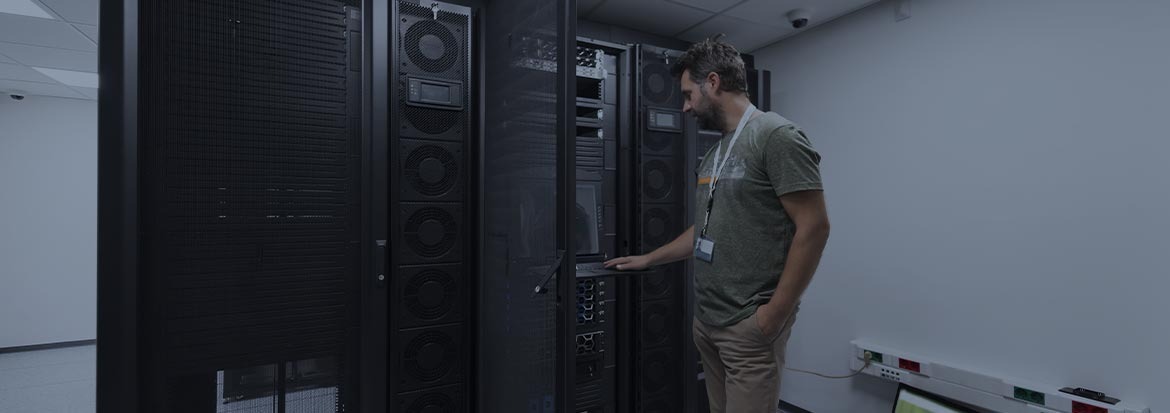
Cloud Migration Services
DigitalCook is an IT service company that has helped thousands of businesses migrate their systems to the cloud seamlessly and efficiently.We provide public and private cloud infrastructures to host businesses’ IT systems. Migrating to the cloud can offer businesses multiple benefits if done with the appropriate strategies and using the adequate talent. Our team can help you seamlessly migrate to the cloud and leverage all its benefits. We provide you with the necessary resources and digital tools to streamline the transition and enhance your IT system and operations.
Among the benefits of migrating to the cloud, we can mention:
- Significant scalability: the cloud resources can scale up to support heavier workloads and multiple users. This is not a simple process when it comes to on-premises infrastructure. In traditional on-site IT environments, businesses need to purchase and set up physical servers, storage and network equipment, and software licenses, in order to scale up their IT resources and technologies, which is a costly and timely procedure.
- Cost-effectiveness: Cloud providers offer outsourced services that reduce operating costs and make maintenance tasks simpler and less time-consuming such as upgrades. Companies that have moved to the cloud can significantly reduce the cost of their IT operations. More resources can be devoted to innovation, whether the operation involves developing new products or improving existing ones.
- Performance: when you move your infrastructure to the cloud, you enhance your performance and team productivity. The user experience is also automatically improved. The cloud provides businesses the possibility to scale up or down easily and accommodate users and business demands. Network latency is also reduced since the cloud offers the possibility to work in geographic locations that are close to end users.
- Seamless digital experiences: The cloud can be accessed from anywhere and at any time. As a result, users can benefit from a better customer experience and seamless operations on the cloud. In addition, the cloud has more modern tools that significantly accelerate and enhance operations for employees.
The Strategies we Follow at DigitalCook
The five cloud migration practices, also known as the 5 Rs fit different company needs and different types of businesses. Businesses that are considering moving to the cloud should consider the migration strategy that best fits their needs. These strategies are:
- The Rehosting or “lift and shift” strategy: this strategy involves using Infrastructure-as-a-Service (IaaS). It includes the process of data and application migration. This process is seamless and benefits companies that are just starting with the cloud. It’s also a good option if your code is difficult to change and you want to migrate your application as-is. remodel.
- The Refactoring or “lift, tinker, shift” strategy: this strategy is a way to streamline and optimize your application for the cloud. In this case, we utilize the Platform as a Service (PaaS) model. We will maintain the core architecture of your application and modify it slightly to better use cloud-based tools.
- The Revision strategy: this strategy builds on the refactoring strategy and requires major changes to the architecture and the application code. This may require the introduction of major code changes. This strategy requires intensive forward planning and in-depth knowledge that our team can provide you with.
- The Rebuilding strategy: This strategy is a more comprehensive form of the revision approach. It discards the current code base and replaces it with a better and more enhanced one. This process is time-consuming and considered in case the company determines that the existing solutions does not meet the current business requirement.
- The Replacement strategy: this strategy is another solution that characterizes the rebuild approach. The difference is that the company isn’t building its own application from scratch. This includes moving to our third-party pre-built applications that we provide to our customers. The only thing that is migrated from current system applications is the business information and data.
Access our Cloud Migration Services
Our Approach at DigitalCook
The DigitalCook Advantage
Find the right model for the right business outcomes
FAQs
What are the Cloud Service Models?
At DigitalCook, we offer businesses the opportunity to choose from multiple cloud service models. Each cloud service model serves a specific purpose and has particular capabilities. The main three service models we offer are:
- Infrastructure as a Service or IaaS: Infrastructure as a Service or IaaS enables the management of remote data center infrastructure. This cloud service model offers virtualized cloud resources and solutions over the Internet hosted by third-party providers such as Microsoft Azure, Google, and Amazon Web Services.
- Enterprises purchase Infrastructure as a service resource based on consumption models, instead of purchasing entire hardware. They only pay for what they use. This model allows organizations to add, remove, or reconfigure their infrastructure as needed. Numerous IT companies rely on this cloud model because they are used to it. Especially because they have deep experience with virtual environments and stringent security and regulatory requirements that only this service model can meet.
- Platform as a Service or PaaS: enables firms to build, orchestrate, and manage applications without needing to have an entire IT infrastructure on premise. This model makes developing, testing, and deploying applications easier and faster.
Developers can focus on creating code and building applications. While we handle the time-consuming IT infrastructure operations such as server provisioning, backup, and storage operations.
This model reduces administrative burden and costs, as well as brings more value to the cloud. This cloud model also makes it easier to innovate and scale services as needed.
- Software as a Service or SaaS: replaces traditional on-device software with software licensed on a subscription basis. Most software-as-a-service applications can be directly accessed from a web browser. You don’t need to download or install anything. You might only need to install some plugins.
What are the Cloud Migration Benefits?
- Reduced costs: Not only are resource, maintenance, and real estate costs significantly reduced, but workloads can be optimized to reduce operational costs.
- Flexibility and scalability: Companies can pay only for the cloud services and resources they use. This means you don't have to pay for IT resources that you use infrequently or maintain them. If demand increases or if the business requires more powerful computing resources, businesses can instantly change resources as needed.
To continue to extract value from their existing IT investments, multiple companies are adopting a hybrid cloud model, moving some workloads to the cloud and keeping others in their current on-premises environment. (Hybrid clouds can also offer industry-specific compliance benefits.)
Most cloud platforms have a global footprint, enabling organizations to improve performance by running workloads that are more accessible to their users.
- Improved security: public clouds have integrated security features and dedicated cloud security tools to ensure your organization's services and resources are safe. Security patches are often applied automatically by cloud providers.
- Compliance: Some cloud platforms have special services to seamlessly meet compliance requirements. This is ideal for industries such as finance, healthcare, and government that are highly regulated.
- Backup, Restore, Failover: Most cloud providers improve business continuity by offering integrated one-click backup and restore capabilities. At DigitalCook, we also offer options to store backups in different regions.
- Simple management and monitoring: At DigitalCook, we offer centralized management tools. As a result, your company can manage and monitor your on-premises data center and cloud resources from the central management tool that we offer. Therefore, it can conduct a seamless cloud migration.

Access our Cloud Migration Services

